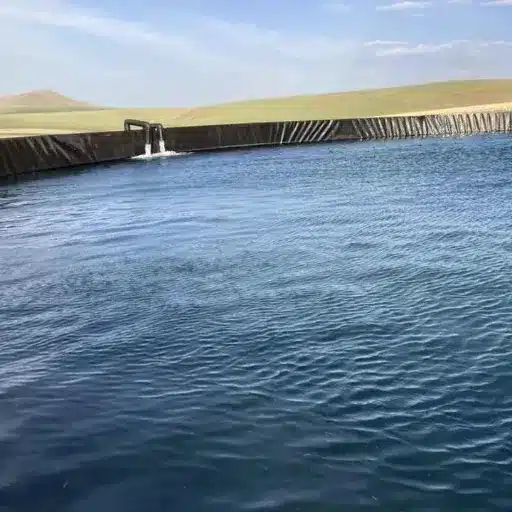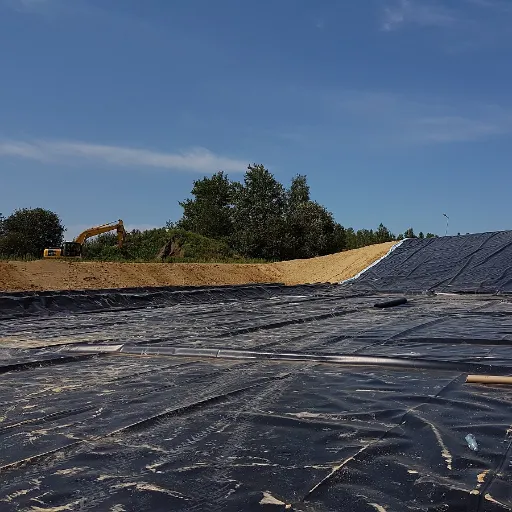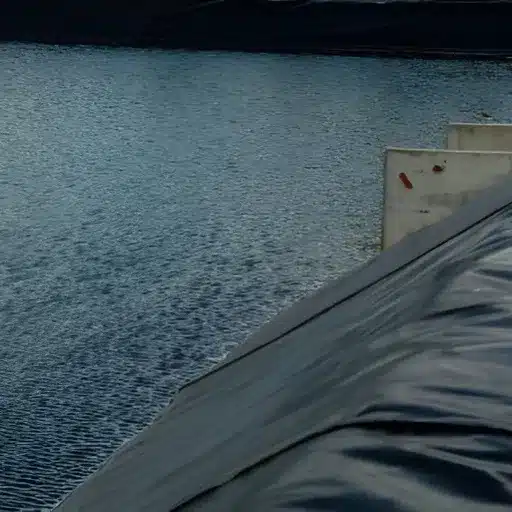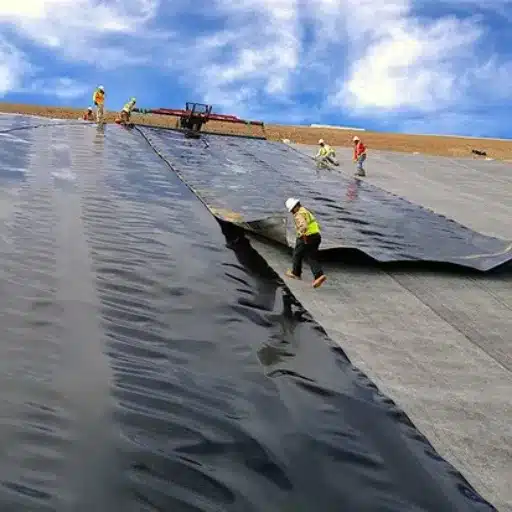The very first consideration when talking about the protection of water storage facilities is by which materials the whole thing will be done. The geomembrane liners have become the “golden standard” for lining reservoirs, ponds, and tanks and creating brilliant floating covers. This article takes you through the geomembrane liners’ world free of doubts, and high performance, and also resource preservation through their long application. So, if you are in charge of agricultural water storage, industrial containment, or municipal water facilities, this guide will give you the necessary knowledge to correctly decide whether to use geomembrane liners in your projects or not.
Introduction to Geomembrane Reservoirs
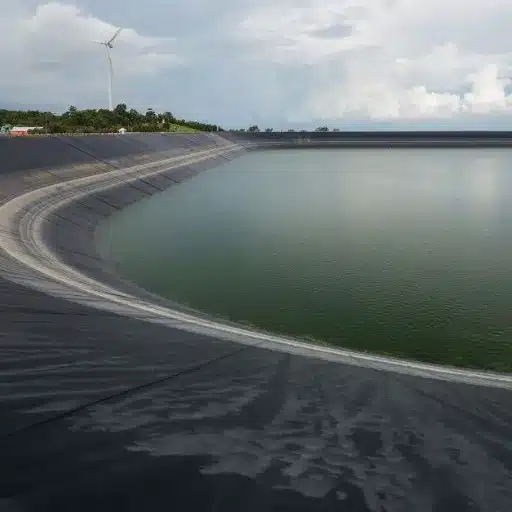
Overview of Geomembranes
Geomembranes are artificial membrane liners or barriers that are extensively utilized in many industries for the purpose of movement controlling of fluids or gases in a certain area. Geomembranes are generally made from polymers that are high-density polyethylene (HDPE), linear low-density polyethylene (LLDPE), or polyvinyl chloride (PVC), and they are also an effective and long-lasting method for containment. Their qualities of flexibility, permeability, and resistance to harsh environmental conditions make them suitable for a wide range of uses, including water reservoirs, mining operations, and landfill containment systems.
Market Insights: As per the latest industry report, the worldwide geomembrane market is estimated to be around $2.1 billion in 2022 and is expected to surpass $3.0 billion by 2030, with a compound annual growth rate (CAGR) of 5.5%. The main reasons for this increase in demand are the requirement for sustainable management of wastewater, stricter environmental regulations, and more investments in infrastructure development.
Importance of Reservoirs in Water Management
Reservoirs are of utmost importance in current water management systems and they have many uses that are essential to meet both societal and environmental needs. They are a consistent and steady source of fresh water that can be used for domestic, agricultural, and industrial purposes, especially during dry seasons or in case of inadequate rainfall. The United Nations estimates that farming alone uses about 70% of the world’s freshwater resources and that is why reservoirs are vital for food security.
Moreover, reservoirs help in controlling the flows of rivers and in preventing floods in the areas that are downstream during the rainy season especially when heavy rains occur. The Hoover Dam on the Colorado River, for example, not only produces hydroelectric power but also supplies water for millions of people and businesses. In cities, the reservoirs can act as a backup water supply for the local government, thus making cities resilient to water shortages caused by drought or other reasons.
What is a Geomembrane Reservoir?
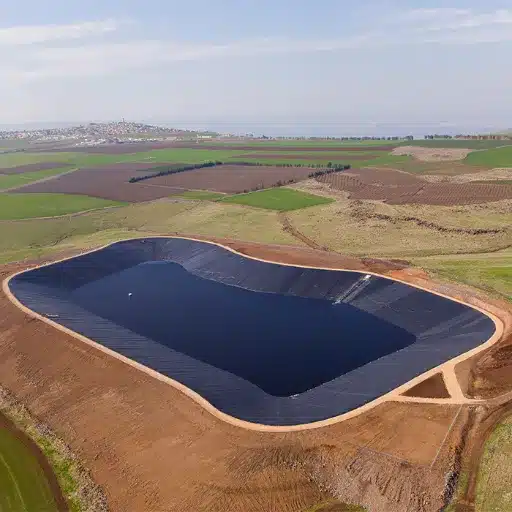
The main features of geomembranes, which include high durability, resistance to chemicals, and flexibility, are the reasons why they are perfect for long-term reservoir applications. They provide a secure barrier against both water infiltration and contamination. The latest statistics show that geomembrane liners can cut water loss down to 5% compared to unlined systems, hence great water-use efficiency. These liners are a blessing in regions with scarcity, where water shortages make it even more necessary to have efficient storage systems.
Beside water retention, geomembrane reservoirs also provide other functions. By stopping leachate from going into the soil and groundwater, they also protect the ecosystems of the area. For instance, in farming, geomembranes are used to prevent the fertilizers or pesticides from mixing with the water sources nearby. Furthermore, the new production techniques have also resulted in new features, like resistance to ultraviolet rays and stability against temperature changes, which are advantageous for the performance of geomembranes in extreme climates.
Applications in Various Industries
1. Agriculture
Geomembranes are indispensable in agricultural water control. They are mainly used for forming irrigation ponds, water canals, and reservoirs. Research has it that water loss from seepage in irrigation ponds lined with geomembranes can be as low as 10%, thus saving thousands of gallons of water every year. This makes water consumption eco-friendly and cost-effective for regions with water scarcity.
2. Waste Management
The use of geomembranes in waste containment systems, which include landfills, is one of the largest applications of these materials. High-density polyethylene (HDPE) geomembranes are often used as liners to control the movement of leachate and protect the surrounding soil and water. Industry statistics indicate that, when correctly installed, geomembrane liners can boost leachate control efficiency to more than 95%, which is in compliance with stringent environmental standards.
3. Mining Industry
Geomembranes are widely applied in the mining industry to create a barrier for tailing ponds, heap leaching areas, and processing plants. They possess remarkable chemical resistance and can survive even the most acidic or alkaline conditions. As an example of the mining industry, it has been reported that the incorporation of geomembrane liners has enhanced the performance of heap leaching by raising its capacity for mineral recovery by 25% while still reducing the environmental impact.
Benefits and Applications of Geomembrane Liners

Advantages of Using Geomembranes
Exceptional Durability and Longevity
Geomembranes are the result of the use of the very best polymers, which make the material unbeatable with regard to chemical, UV, and weathering resistance. The main materials for geomembranes, especially the HDPE, have a life expectancy of more than 20 years even when placed in extremely harsh environments.
Effective Containment and Leakage Prevention
The absolute barrier created by geomembranes means no leaks or seepage can occur. This serves a great purpose in landfill liners, hazardous waste containment, and mining operations where the containment of toxic substances is a must. By the way, research indicates that the permeability of HDPE liners can be as low as 10⁻¹² cm/s, so they are quite ahead of old clay liners with regards to leakage prevention.
Environmental Protection and Resource Conservation
Choking off the supply of water and soil contaminants, geomembranes take on the same role as mouth-to-mouth breathers in maintaining the health of the ecosystem. In agriculture, for instance, they can be installed in irrigation canals and water reservoirs which, oddly enough, gives rise to a typical water loss of only 10% from seepage instead of the usual 100%. This practice just cannot be ignored as it plays a very important part in the overall water saving efforts in the desert regions.
Common Applications: Pond, Tank, and Canal Liners
Pond Liners
Geomembranes are extremely Valuable in creating a boundary for ponds that are repurposed for agriculture, aquaculture, and ornamental reasons. Water seepage and pollution from the outside can be prevented with their impermeability, while water quality can be sustained. A study claims that using geomembrane liners in aquaculture ponds, for example, might see an increase in productivity of about 20–30%, which is the result of water retention and the maintenance of perfect water conditions.
Tank Liners
Tank liners are a protection for liquid storage tanks that guarantee no leakage or interaction between the material of the stored substances and the tank. They find their place in industries such as wastewater treatment, chemical storage, and potable water storage. Lately, it has been published that tanks lined with high-density polyethylene (HDPE) geomembranes provide remarkable chemical resistance and an extended lifespan of up to 20–30 years depending on maintenance and environmental conditions.
Canal Liners
Canal liners are one of the key applications of geomembranes, especially in irrigation systems and water distribution networks. They effectively reduce water loss through seepage, leading to significant water use efficiency. Research indicates that lined canals can reduce water loss by as much as 80% compared to unlined canals, thus making the use of geomembrane-lined canals critical in the fight against water scarcity in dry areas. Additionally, their installation is considered a cost-effective approach, particularly when juxtaposed with concrete alternatives.
Types of Geomembrane Materials
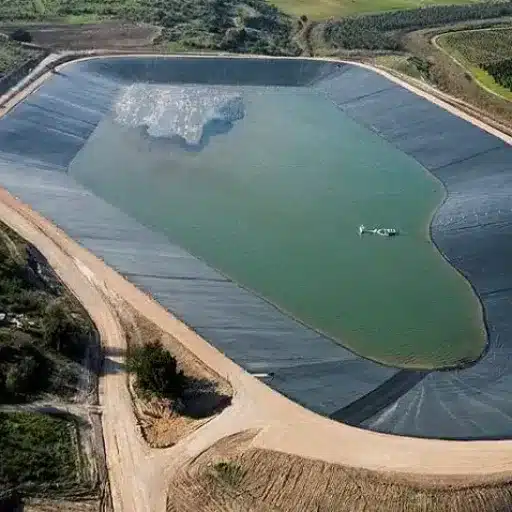
Overview of Different Geomembrane Material Types
| Material Type | Key Characteristics | Typical Applications |
|---|---|---|
| HDPE |
|
Landfills, wastewater treatment, mining operations |
| LLDPE |
|
Lagoons, landfills with complex shapes, uneven terrain applications |
| PVC |
|
Irrigation canals, agricultural ponds, temporary applications |
High-Density Polyethylene (HDPE)
HDPE is considered to be the most commonly used geomembrane material, in view of its superior resistance to thermal exposure from sunlight, chemicals, and environmental stress cracking. Reports indicate that HDPE has a serviceable life of more than 20 years under standard landfill conditions. Besides, its low permeability allows for very little leakage, thus making it suitable for ecological containment systems like landfills, wastewater treatment ponds, and mining operations. With an elongation of about 700%, coupled with tensile strengths reaching 25 MPa, the material provides both toughness and dependability.
Linear Low-Density Polyethylene (LLDPE)
LLDPE membranes can be considered neither too rigid nor too soft; that is why they are suitable for areas where the surface is very uneven and the adaptability should be foremost. With a typical elongation capacity of more than 800%, LLDPE is been used in areas with complicated shapes like lagoons and landfills where less material can be used. It might be a little less durable than HDPE but the flexibility that one gets with LLDPE negates the need for extra time and money for installation and reduces the chances of cracking due to stress.
Polyvinyl Chloride (PVC)
PVC is one of the most flexible and softest materials used for geomembranes; hence they are used for small and temporary applications only. PVC geomembranes can be found in irrigation canals and agricultural ponds; they offer a tensile strength of about 16 MPa and an elongation rate of more than 300%. Nevertheless, they are vulnerable to weathering and UV degradation more than HDPE and LLDPE and thus the use of protective measures during installation is sometimes necessary.
Choosing the Right Material for Your Project
Chemical Resistance
Projects that involve contact with very harsh chemicals, such as industrial waste containment, need materials like HDPE (High-Density Polyethylene). HDPE has good chemical resistance and this is one of the reasons why it can be used in cases where there is continuous exposure to toxins. Furthermore, EPDM (Ethylene Propylene Diene Monomer) is also a great option as it has good chemical compatibility even in cases of moderate exposure.
Durability and Longevity
For long projects, uv resistance, youratol, and longevity are critical factors. The research has shown that HDPE membranes can last for as long as 20 to 30 years, if installed properly, as they would withstand weathering and physical stress. PVC (Polyvinyl Chloride) can also be a suitable alternative but it might need to be replaced in high exposure areas.
Flexibility
Flexibility is a crucial factor for uneven terrains or complex installations. EPDM is one of those materials that are highly elastic and can easily adapt to the environment with an elongation rate of more than 300%. Therefore, they are highly suitable for decorative ponds or areas that require substantial movement tolerance.
Installation Process and Best Practices

Best Practices for Ensuring Longevity of Geomembrane Liners
Choose the Appropriate Material
Different geomembrane varieties are tailored to various applications. HDPE is the most applied type because of its chemical resistance and UV stability, but LDPE and LLDPE are more suited for the areas requiring more flexibility. A 2023 industrial study revealed that under right maintenance conditions, an HDPE liner could last 40 years in containing leakage materials effectively.
Installation Techniques
Mistakes made in the installation process rank first among the reasons for geomembrane failure. Hire only certified professionals that have complete control over all aspects of seam making and welding. Industry statistics indicate a 20 to 30% life span increase of the liner due to quality control practices during the installation phase, e.g. non-destructive seam testing.
Inspection and Maintenance
Do thorough inspections to detect wear and tear caused by physical damage or chemical exposure. A preventive maintenance schedule could encompass visual inspections, ultrasonic testing for invisible damage, and chemical resistance analysis for high-risk environments.
Installation Mistakes to Avoid
⚠ Overlooking Subgrade Preparation
One of the very common mistakes made during installation is to not prepare the subgrade properly. A surface that is not even can puncture or damage the liner leading to its inefficiency. In one study, it was reported that improper subgrade preparation causes nearly 40% of premature liner failures. Thus ensure that the area is cleared, compacted, and graded to make it smooth and free from sharp objects.
⚠ Seaming Techniques
Seaming practices that are not up to the mark often result in weak or leaking connections between liner panels. An industry expert’s quality control review in 2023 pointed out that heat or chemical seams done at incorrect temperatures can yield failure rates as high as 25%. Always adhere to the manufacturer’s recommendations for seaming and conduct non-destructive testing to affirm seam integrity.
⚠ Too Small Anchor Trenches
If adequate anchor trenches are not constructed, it may result in liner displacement, especially in case of high winds or heavy rains. Data indicate that a properly installed anchor trench can make the liner stable by more than 50%, thus lessening the chance of uplift or sliding. The trenches should be ranked and compressed according to the specific liner material’s requirements.
Reference Sources
-
Mordor Intelligence – Geomembranes Market Report
This report provides insights into the geomembrane market, including applications, trends, and growth forecasts. It highlights the use of geomembranes in water storage and environmental protection projects.
Source Link -
Stratview Research – Geomembrane Market Analysis
This analysis covers the market size, share, and growth of geomembranes, emphasizing their applications in reservoirs, waste containment, and other industries.
Source Link -
Lucintel – Geomembrane Market Report
This report discusses the global geomembrane market, including its applications in water management and environmental projects, and provides growth forecasts.
Source Link
Frequently Asked Questions (FAQs)
Q: How does a geomembrane pond liner work?
A geomembrane pond liner is the one that functions like a barrier that is waterproof and so it does not allow water to seep through the soil. They are made of HDPE or polypropylene and these materials are very strong as well as being able to endure the normal wear and tear of the environment. It is through this method that the water in the pond remains inside and the loss through seepage is minimized thus maintaining the level of water that is ideal for the purpose of use.
Q: How are geomembrane covers used in existing structures?
The use of geomembrane covers in existing structures is for the purpose of enhancing the waterproofing and protection of the building, which is already a great source of concern. These covers can stop effluent leakage and additionally control the smell in places like landfills and wastewater treatment facilities. Geomembrane covers help so that the existing structures are not only up to environmental standards but also play a key role in the maintenance of public health and safety.
Q: What materials are commonly used in geomembrane products?
Extensive use of HDPE, PVC, and polypropylene is made in the manufacture of geomembrane products. The demand for HDPE geomembranes is significant because they are chemical resistant, and UV-light resistant and have strength as their basic property. The less expensive PVC liners are also used mainly due to their great flexibility and good performance. In certain applications, these materials can be combined with scrim-reinforced designs to their durability.
Q: What is the installation process for geomembrane liners?
The process of installation of the geomembrane liners is made up of multiple steps like site preparation, material selection, and the proper positioning of the liner. Initially, the site is to be graded and all debris is to be removed from it. The geomembrane product is then spread out and very carefully welded or secured so there will not be any gaps at all. It must be done after the installation that testing shall take place to assure the liner does meet the required specifications, and that it is also free of any defects.

